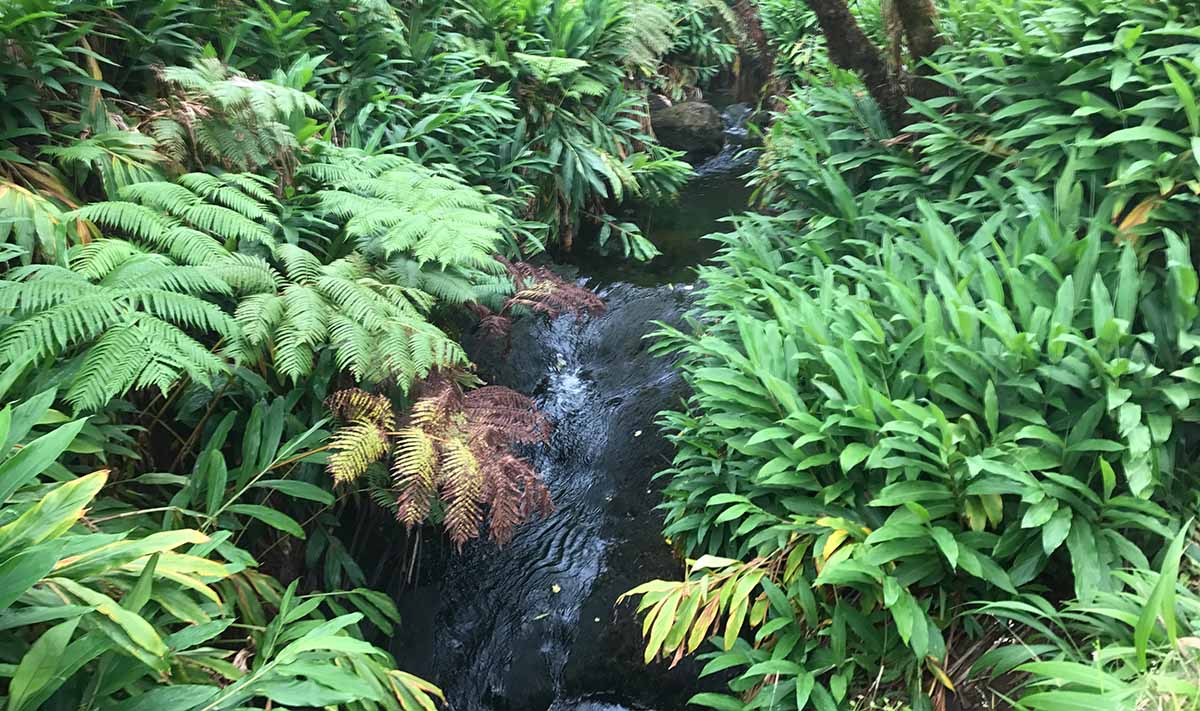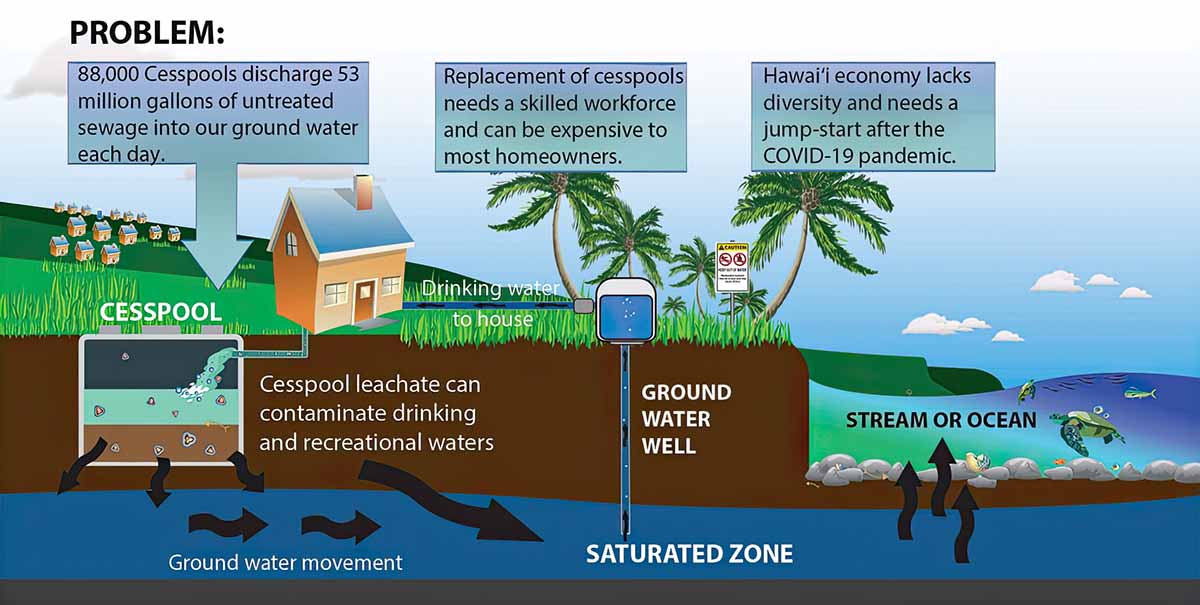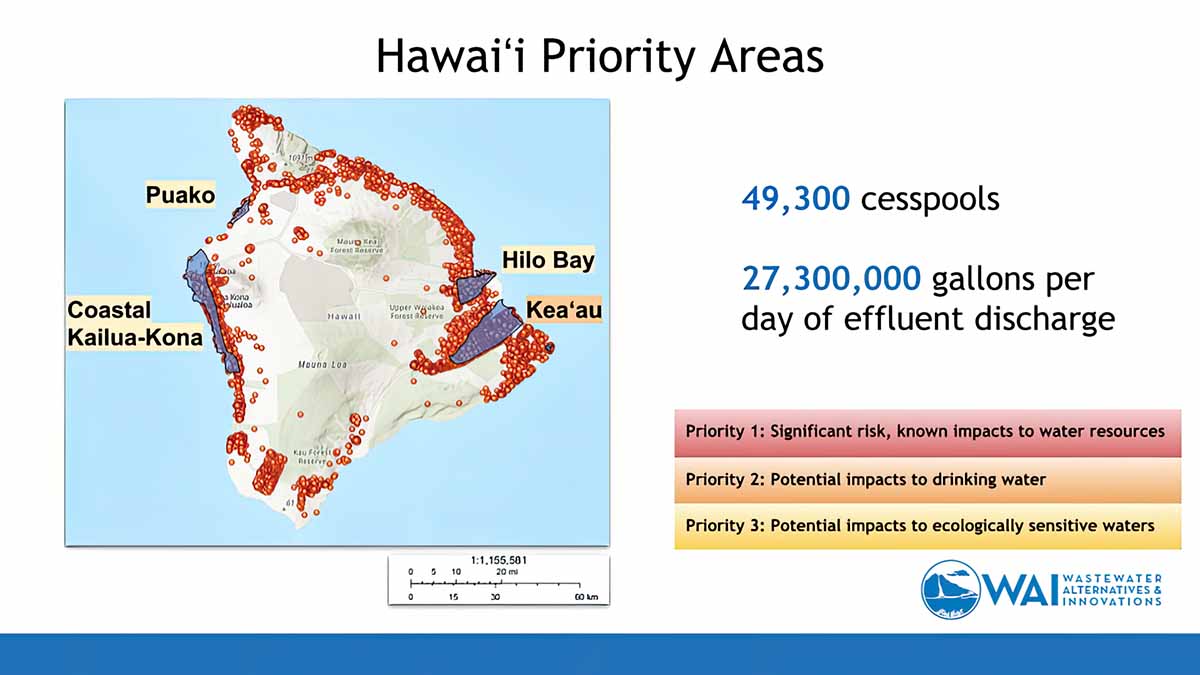Did you know there are about 83,000 cesspools in the State of Hawaiʻi?
Interesting piece of trivia, you say. Who cares? Well in the years ahead, about 83,000 homeowners are going to care a lot.
By Hawai‘i State law, all cesspools in the state must be converted to septic, or other approved wastewater systems, or connected to a city sewer system, by the year 2050.
Why is this coming up now?
Late last year, the Hawai‘i Department of Health (DOH) announced a special pilot program to assist for homeowners in the more hazardous areas (mostly Hilo Bay, South Kohala and part of the Kona Coast). An estimated $5 million in grants up to $20,000 will be available to distribute to about 250 homes. These grants are for reimbursable expenses only, and the grantee’s household income must be at or below 140% of the Area Median Income by US Department of Housing and Urban Development (HUD).
Applications became available in March of 2023, and are accepted on a first come-first served basis, by mail or in-person delivery only. For more information about the cesspool grant program, please visit the Cesspool Pilot Grant Program (CPGP) website, or call (808) 586-4294.
However, this isn’t a new problem. In 2005, the Environmental Protection Agency, and the State of Hawai‘i outlawed cesspools in new construction. In 2017, the legislature passed Act 125, requiring the conversions by 2050. In 2018, they established a working group, and contracted with University of Hawai‘i to conduct an extensive study (see below).
Why exactly do we have to do this?
Well, according to the DOH, those 83,000 cesspools allow about 53,000 million gallons of untreated sewage to leak into the ground every day. Let that “sink in” for a minute.
The reason for this is that cesspools are essentially holes in the ground that collect and store wastewater from toilets, sinks, and other sources. Over time, the effluent from cesspools can seep into the ground and contaminate the soil and groundwater, posing a significant risk to public health and the environment.
Septic tanks, on the other hand, are designed to treat wastewater by allowing solids to settle out and decompose, while the liquid portion is discharged into a drain field for further treatment in the soil. Septic systems are more effective than cesspools at treating wastewater and reducing the risk of contamination.
Do I need to worry?
Probably not, immediately. You most likely have years to take care of the conversion, or connect to a city sewer system if it’s available for your property. However, now is the time to start thinking about it. If you are, or soon will be, selling your home, you will have to disclose the property’s cesspool. Having it converted prior to that time could add significantly to the sale price.
On the other side of that coin, if you’re looking to buy a home on Hawai‘i Island—which has the majority, about 50,000 cesspools—then you need to know what you’re getting into. A home with a cesspool will require a big expenditure—about $30-50,000—and a home with an up-to-date septic system has extra value.
Time is also a factor to coordinate the conversion. You’re going to need to hire an engineer to do a site evaluation and a percolation test, and create plans for your septic tank. Then, you’ll need a licensed contractor, who’ll expect 50% down payment.
How did they figure this **** out?
Shortly after Hawai‘i enacted Act 125, the Legislature established a Cesspool Conversion Working Group within the Department of Health to complete a five-year study. The results were released this year. They also tasked the University of Hawai‘i with conducting a comprehensive survey of contamination in nearshore areas.
For this, UH developed a “prioritization tool” to help establish priority levels and determine areas who need conversions first. According to the website, “Fifteen statewide data layers with relevance to cesspool hazards were overlain with cesspool locations in a code-based geospatial tool.” With all that data—whatever it is—the tool designated Priority 1, 2 and 3 zones.
Within Priority 1 are certain “red dot” areas which require conversion by 2030. These cesspools have the greatest potential to impact human health and the environment and are directly adjacent sensitive natural resources like coral reefs or drinking water aquifers.
Where do I start?
Take a look at the animated video on the “Potty Portal.”
You’ll also find very useful resources in the Potty Portal, including:
- A map of cesspools, statewide
- List of engineers licensed to install Individual Wastewater System
- Possible sources of Federal financial assistance through loans and grants
Are there any alternatives to septic tanks?
There are. And, although we can’t recommend any in particular, there are a number of alternatives for you to consider, detailed on the Potty Portal, or the EPA website.
Final Math Quiz
Q. If there are 50 licensed wastewater installers in the state, and 83,000 installations are needed by 2050, how many will each installer have to do?
A. That’s 1,1660 installs each, or 61 installs per year per installer for 27 years, or one every 6 days.
Q. If the cost of installation runs about $35,000 on average, what is the total amount that will be spent on installations statewide?
A. $35,000 times 83,000 installs = $2,905,000,000.
Q. When do I need to start planning a cesspool conversion or connection?
A. No time like the present. You don’t want to get stuck up **** creek!

Hamakua Coast Stream




